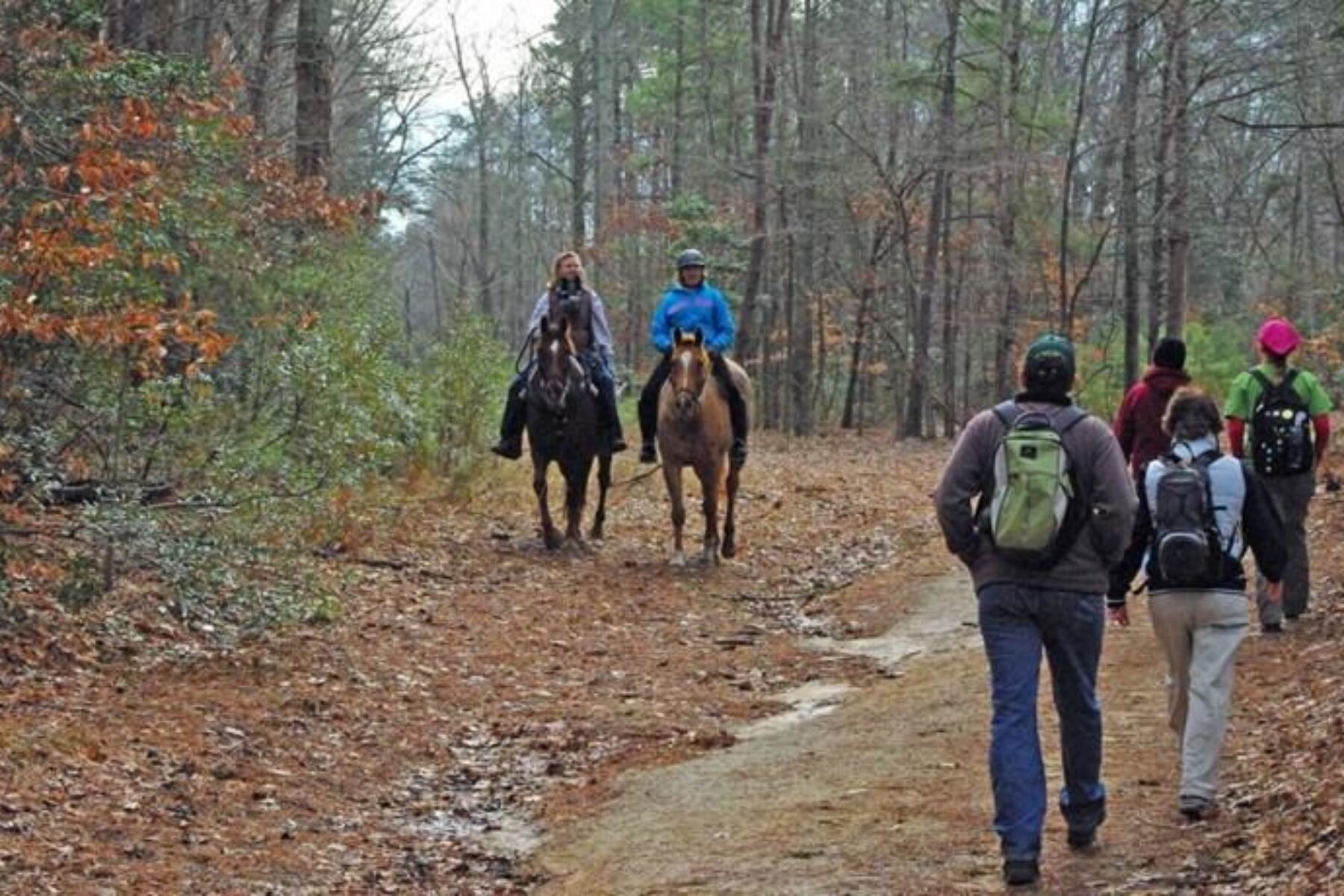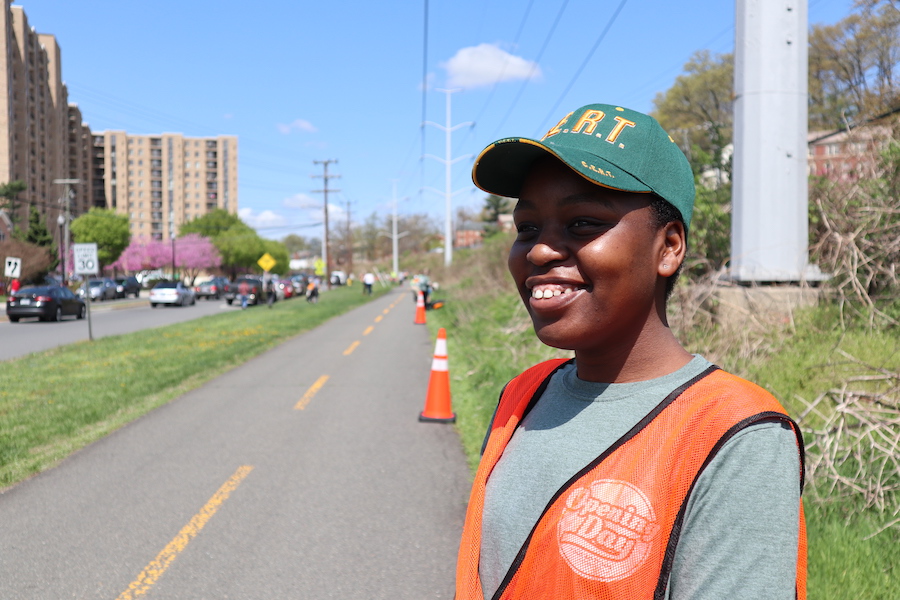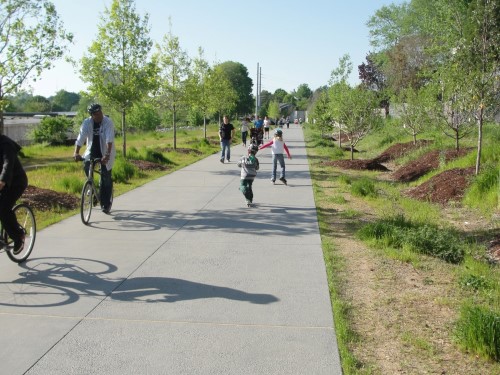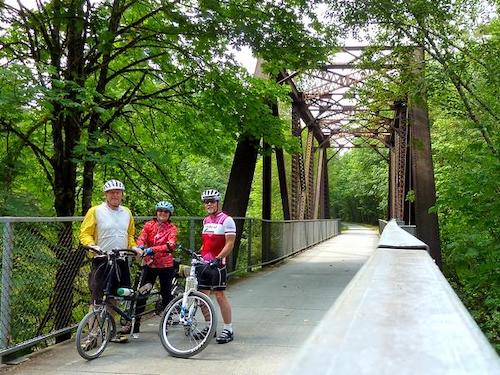Five Common Types of Trail Use Rules (Everyone Should Know)

When you’re out on the trail, knowing and following the rules seems easy enough, but rules can vary from trail to trail. Some rules are universal, while others differ by state and municipality. Although it’s impossible to list the rules for every trail in the United States, we’ve broken them down into five simple categories that all trail users should be familiar with to help keep the trail a safe and welcoming place for everyone.
1. Opening and closing times vary.

Most trails are open from at least dawn until dusk, and many are open well into the evening or all night. For example, the Washington & Old Dominion Trail in Northern Virginia is open from 5 a.m. to 9 p.m., whereas the High Trestle Trail in Iowa is accessible 24 hours a day. (This unique trail showcases 43 steel cribbings lined with LED lights that come on at night to create a beautiful coal-mine-inspired backdrop.)
Some trails close temporarily due to inclement weather, the season, construction or other improvements. In most cases, the trail managers will note the hours of operation and important updates on their website and/or social media channels.
Regardless of when you head out to a trail, remember to stay alert—and visible clothing is always a great idea.
2. Trails follow federal, state and local laws.

Keep in mind that the same local laws and ordinances that apply for other public places, like parks, will likely apply to trails as well, for example: no alcohol, no smoking or illegal drugs, and no discharging firearms.
It’s particularly important to remember that all traffic laws apply at crosswalks, intersections and turnoffs, and, in recent decades, many states and localities have adopted bicycle-rider helmet laws.
Some localities will have permit requirements for events and fundraising initiatives, and camping is usually only permitted in publicly designated camping areas or private campsites. It’s a great idea to check with your local trail manager about the regulations that apply in your area. If you’re not sure of how to get in contact with your trail manager, we recommend that you start by checking the information on TrailLink, RTC’s trail-finder service!
3. Appropriate types of trail use are determined locally.

With rapid changes in technology and a growing demand for more mobility options, you may be noticing a greater diversity of activities and devices on trails these days. From low-speed electric-assist bicycles, e-scooters, hoverboards and other micromobility devices, it can be hard to keep up with the latest trends—let alone the rules of the trail.
Many multiuse trails prohibit the use of motorized vehicles—and most simply aren’t suited for it, however, some permit snowmobiles seasonally or make exceptions for specific motorized uses, including ATVs. With the advent of light personal-mobility devices like e-bikes and scooters, it can be hard to know what’s allowed and what isn’t. For example, the Federal Highway Administration (FHWA) says that e-bikes may be allowed on federally funded trails if state and local regulations permit it.
To provide guidance for decision-makers, trail managers and users like you, RTC recently developed a set of criteria to help assess the use of different devices on trails, while offering the flexibility to keep up with the fast-paced evolution of micromobility technologies.
In short, how can you tell what’s allowed where? It’s simple: Check with your trail manager before using the trail, and remember to always practice proper trail etiquette when on the trail.
*Note that Americans with Disabilities Act (ADA) laws allow motorized wheelchairs or other power-driven mobility devices, even if a trail doesn’t allow motorized vehicles. Federal ADA laws supersede all other laws and regulations when it comes to people with disabilities and trail access.
4. Users should leave no trace.

This one almost goes without saying. First, pick up after yourself, and clean up after your pets (many trails have trash cans along their corridors or at trailheads, and some provide pet waste receptacles). Second, don’t disturb wildlife and local vegetation. Most trails prohibit the destruction or removal of any plants or trees without a permit, and some have rules about not stepping in certain protected plant or wildlife areas. Additionally, some may be attempting to nurture the growth of specific native plant species, like those on the Saucon Rail-Trail. As the saying goes, “Take only pictures; leave only footprints.”
The intent of some regulations may not be clear at first, but they could exist to protect an environmental resource or historical site. In all cases, try to disturb your surroundings as little as possible to help preserve natural ecosystems and cultural geography. These are the features that make trails special!
5. Even universal trail etiquette practices can—and do—vary.

Most trails follow generally accepted, universal safety and etiquette practices, such as those outlined in RTC’s list of six Share the Trail tips.
Sometimes, they are carefully regulated; in Renton, Washington, for example, the Cedar River Trail requires all cyclists to follow a 10-mile-per-hour bike speed regulation within city limits; violators can be fined. (Users on foot and wheel must stay on their side of the yellow line, as well.)
In some cases, the rules exist, but with exceptions. For instance, while racing and speed training are generally no-nos on the Wallkill Valley Rail Trail, you can apply for a permit to hold a race or walk with the Wallkill Valley Land Trust.
And sometimes, the rules are different based on location: In Sacramento, California, and in Rhode Island, the rule is to keep left when walking (as you would on a road, facing traffic) and right when cycling. And some trails ask that all traffic keeps left.
What is more universal, however, is the yielding rule: horses have right of way, then pedestrians, then inline skaters, then cyclists. Another good tip: When passing a horse, do not ring a bell or blow a whistle, but do give the rider an audible heads-up.
In closing …

It’s always best to know and follow the rules of your favorite trails. Together, we can all set a great example for others! Fortunately, trail managers make this task easy: Many trail rules are listed online or at trailheads and major intersections.
And when in doubt, follow the Golden Rule: Treat others (and your community) with the same kindness you want in return to help ensure everyone feels safe and comfortable—and has a great time—on America’s trails.
This blog was originally published on July 21, 2015.

Donate
Everyone deserves access to safe ways to walk, bike, and be active outdoors.



